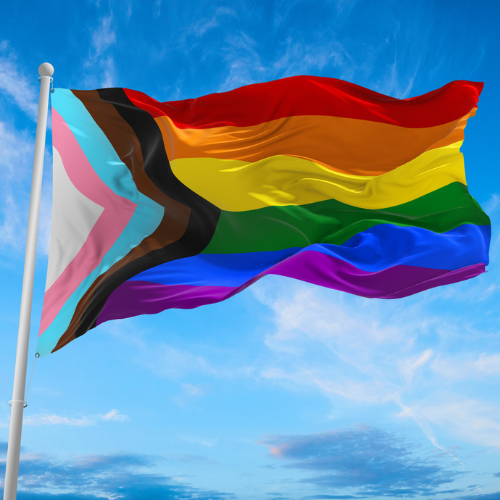Why “PRIDE?” For so long, members of the LGBTQ+ community were discriminated against as well as stigmatized, ridiculed and shamed because of their sexual orientation. Naming the organization that supports the LGBTQ+ community, PRIDE, was specifically to try to undo the damage caused by homophobic detractors. As is typical within the United States, it was activism that brought change to how gay people were seen and treated. The Stonewall Riot of June 28, 1969 was one of several riots across the U.S protesting police harassment and brutality towards LGBT citizens. These riots created the momentum for creating national awareness for the inequity that existed. It was a call to creating more equity and inclusivity for lesbian, gay, bi-sexual, transgender and queer Americans. At the intersection of Queer and Transgender were People of Color who were facing discrimination and abuse, and who were further marginalized; their support was indispensable to the movement.
It has been a long up-hill battle to secure equal rights for LGBTQ+ people. Our job is not yet done. Today gay marriage is protected at the federal level as of 2015. Yet only 30 countries around the world have made gay marriage legal; The Netherlands led the way in 2000 as the first country to legalize gay marriage. Taiwan followed suit in 2019; it became the first place in Asia to recognize gay marriage. Today 70 countries have still not legalized gay rights. Thirteen of those 70 countries have the death penalty for gay activity. Those countries include Iran, the UAE, Pakistan, Yemen, Qatar, Nigeria and Saudi Arabia, to name a few. Religious beliefs seem to be at the center of this inequity: Islamic ‘sharia’ codes of conduct in the Islamic faith, as well as religious conservatism among Christians.
Unfortunately, the harshest outcomes of homophobia manifests in the lives of transgender and non-binary citizens (1.6% of Americans, or more than 5 million people). A Yale School of Public Health study found that:
“transgender individuals who had received a diagnosis of gender incongruence were:
- six times more likely to have a mood or anxiety disorder than the general population.
- three times as likely to be prescribed antidepressants and antianxiety medications.
- more than six times as likely to attempt suicide resulting in hospitalization.”
Moreover, the Cleveland Clinic, found that transgender children (K – 12) are more likely to be bullied. 25% of transgender children experience physical attacks and 10% are sexually assaulted. As a result, 39% of trans individuals (versus only 5% of the general US population) report traumatic experiences leading to “severe psychological distress.” Additionally transgender people experience double the unemployment rates as the general population, 44% are under employed, and they are 4 times more likely to live below the poverty level.
In many states in the USA transgender rights are not recognized: they are forced to use bathrooms related to the gender they were assigned at birth, are not allowed to compete as trans-athletes, and have restricted access to healthcare if they are trans youth seeking to medically transition. Most transgender people say they were aware of their gender differences at a very young age. Several states have forbidden young children from discussing this with school faculty or guidance counselors making this an even more difficult for young people to address.
As you think about PRIDE month remember, giving others the rights we all enjoy does not take anything away from us. Just as we recognize religious freedom, we should be able to accept the rights of people to be who they are and love whom they want.
Part of the challenge many people face is lack of understanding or exposure to people on the LGBTQ+ community. By learning more about them, hearing their voices, and making friends in these communities we can expand our understanding to make our world a more inclusive and kinder place. If you want to learn more, these websites can help:
- The Center: LGBT Community Center – https://gaycenter.org based in NYC with plenty of resources.
- Pew Research Center: https://www.pewresearch.org/social-trends/2022/06/07/the-experiences-challenges-and-hopes-of-transgender-and-nonbinary-u-s-adults/
- Identiversity.com for research-based information to understand gender and sexual orientation and what LGBTQ+ means https://www.identiversity.org
- https://campaigns.moveon.org/generation-rainbow/ to protect queer youth.
- Look for sensitive and well represented movies to help widen your understanding: many are available from “Boys Don’t Cry” (2000) to the “Danish Girl” (2015) and many more.

